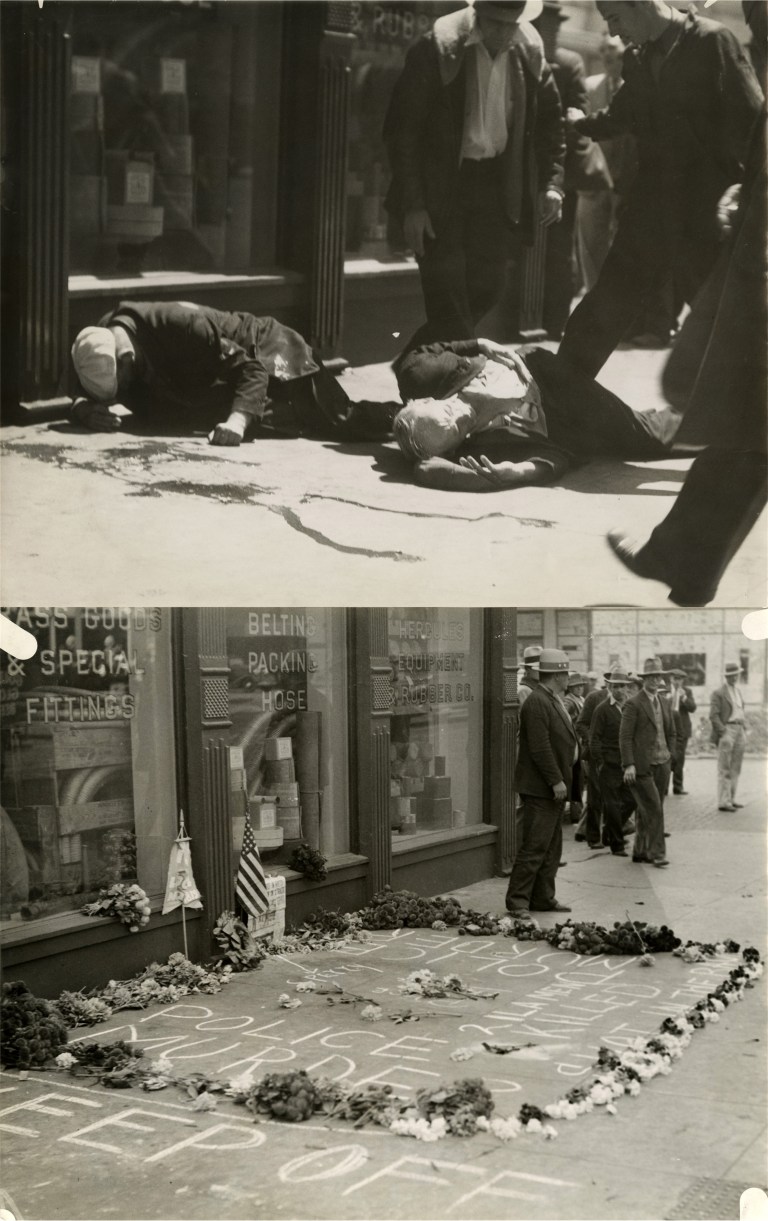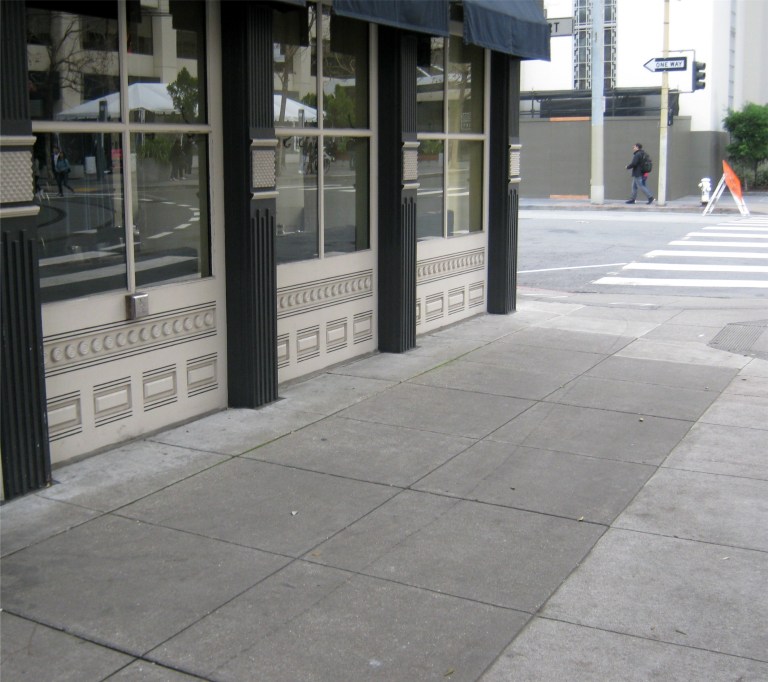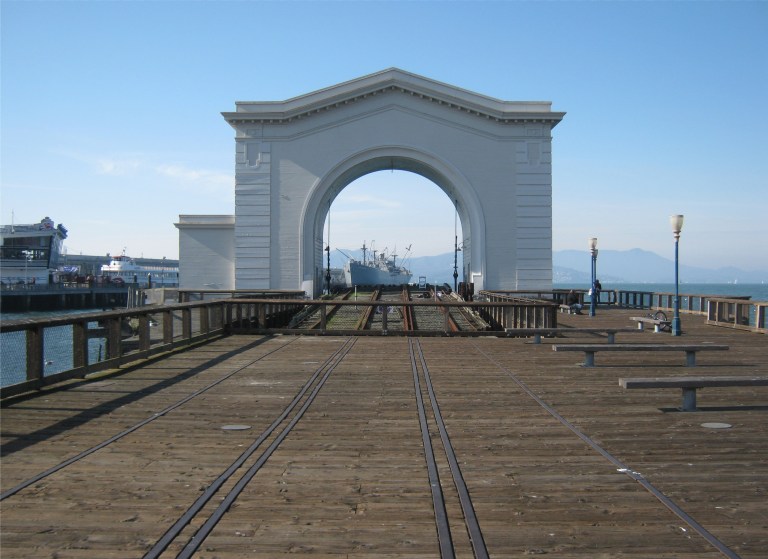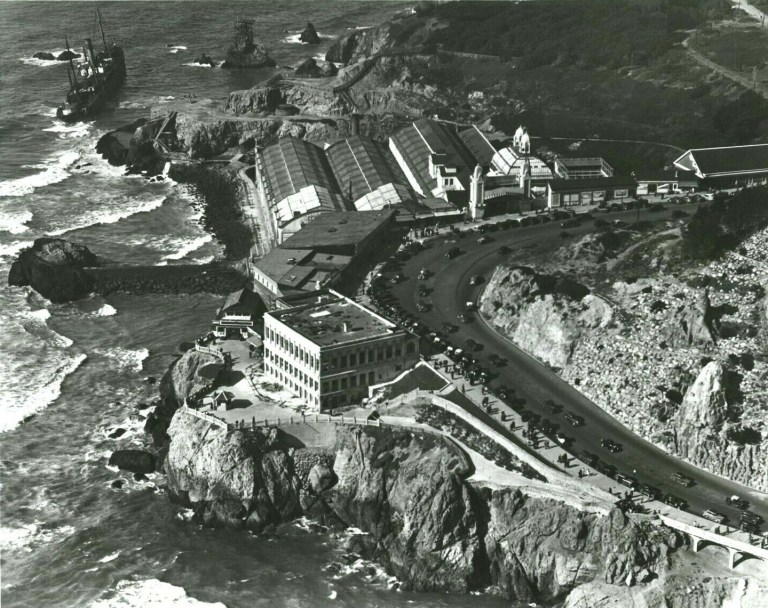 {San Francisco
{San Francisco
Monday, July 13th
Arrived in port: Stmr. Araby, Captain Jarvis; general cargo from New Orleans and Gulf ports.
Docked at Pier 43.
S. F. Shipping Guide}
{In silence, Greg turned. Yes, he understood only too well! He had heard enough tales about the San Francisco waterfront to know that there was truth in the man’s statement. He recalled stories of bodies found floating in the bay, with marks of violence upon them; stories of men picked up in dark nooks along the dockside, men barely breathing – all of them crimes rarely cleared up.}
Doesn’t paint a rosy picture of the Embarcadero in 1937 when Howard Pease wrote his mystery ‘Foghorns’, does it? And it wasn’t inaccurate at all! Violence, sabotage, labor unrest, and the always pending threat of a longshoremen strike made the San Francisco waterfront an uneasy and often dangerous area. At night when the fog came in sailors and longshoremen often had to be very cautious on a shore leave. Howard Pease’s book is filled with descriptions of the color, flavor, and mystery of what it must have been like along the Embarcadero back then, and there are also a number of references to historical incidents that had and were occurring around San Francisco at that time. So put on a pair of dungarees, throw a duffel bag over your shoulder, and listen to the foghorns as we explore the Port of San Francisco and other locations in the city described in passages from the book, (in brackets) and I’ll include vintage and updated pictures of the long-ago San Francisco the author writes about.
 The main character is Gregory Richards, eighteen years old and down-and-out, trying to get a job on one of the many ships docked along the Embarcadero in 1936. His two main troubles are a pending waterfront strike, and the fact that none of the ship crews are willing to hire someone who hasn’t shipped out and hasn’t had ship sailing experience. He meets a fellow named John Brant who is willing to sell him a phony discharge certificate proving he has had sea experience and tells him where a ship named the SS Araby, that will hire him if he’s willing to cross a picket line, is docked.
The main character is Gregory Richards, eighteen years old and down-and-out, trying to get a job on one of the many ships docked along the Embarcadero in 1936. His two main troubles are a pending waterfront strike, and the fact that none of the ship crews are willing to hire someone who hasn’t shipped out and hasn’t had ship sailing experience. He meets a fellow named John Brant who is willing to sell him a phony discharge certificate proving he has had sea experience and tells him where a ship named the SS Araby, that will hire him if he’s willing to cross a picket line, is docked.
{“She’s tied up at Pier 43. Go straight along the Embarcadero to Fisherman’s Wharf.” Well, she sounded all right to him. He picked up the two bags, and stuck off through the fog toward Pier 43.}
The illustration of Greg applying for work on the Araby is from the 1948 reprint of ‘Foghorns’ that I bought.
 Before Richards runs into John Brant, he is warned of the dangers along the waterfront by a gentleman at a sailor’s hiring hall, particularly for strike breakers. When Richards inquires about police protection, the fellow tells him,
Before Richards runs into John Brant, he is warned of the dangers along the waterfront by a gentleman at a sailor’s hiring hall, particularly for strike breakers. When Richards inquires about police protection, the fellow tells him,
{“The police? Say, the cops is lucky not to get beat up too. Why? Because the police shot down two unarmed seamen out on strike. Shot ‘em down right here on the sidewalk. Left ‘em lying with their blood dripping into the gutter.” The man looked down as if he could see two outstretched bodies at his feet.}
This man is referring to the famous July 5th 1934 “Bloody Thursday” incident where police fired into a crowd of striking longshoremen at the intersection of Steuart and Mission Street, hitting three men, two of whom died. A shrine was established in the following days at the southeast corner of Steuart and Mission where two of the victims crawled to, seen in the top pictures.
 The spot where the previous two pictures were taken today:
The spot where the previous two pictures were taken today:
 There is a marker describing the incident on a building at Steuart and Mission Streets today.
There is a marker describing the incident on a building at Steuart and Mission Streets today.
 The “Bloody Thursday” incident is still commemorated today on the sidewalk in front of the Longshoremen’s Hall on North Point Street.
The “Bloody Thursday” incident is still commemorated today on the sidewalk in front of the Longshoremen’s Hall on North Point Street.

 Greg counts the piers as he walks from Mission Street to Pier 43.
Greg counts the piers as he walks from Mission Street to Pier 43.
{On his right hand rose a line of great covered piers, silent and dark, their immense doors closed for the night. He counted them as he went along. Pier 29 – the Luckenbach Steamship Company. Pier 31 – the Oriental Line. Pier 33 – the American-Hawaiian SS Company. Even their names spelled romance.}
The above top photo is a close-up portion of these same piers from David Rumsey’s incredible aerial collage of San Francisco taken in 1938, one year after ‘Foghorns’ was written. The bottom picture is at this stretch of Embarcadero piers from ground level nowadays.
 Having been discouraged by the picketers in front of Pier 43, Greg requests assistance from a police officer watching from across the street to cross through the picket line and board the Araby.
Having been discouraged by the picketers in front of Pier 43, Greg requests assistance from a police officer watching from across the street to cross through the picket line and board the Araby.
{“Just a seaman going on board the Araby, boys. No trouble, now.”
“Okay.” one of the men nodded, grinning.}
Pier 43 is the pier on the left in Davis Rumsey’s aerial photo from 1938. The round buildings at the bottom of the photo were the large gas tanks that were there from the 1930s until the 1960’s.

 The top vintage picture above from opensfhistory.org is Pier 43 with a ship docked there in 1939. The picture below it I took looking through Pier 43 toward the Liberty Ship Jeremiah O’Brien:
The top vintage picture above from opensfhistory.org is Pier 43 with a ship docked there in 1939. The picture below it I took looking through Pier 43 toward the Liberty Ship Jeremiah O’Brien:
 Greg is hired on to the crew of the Araby, but shortly after, an arsonist fire is started in the cargo hold. A series of clues leads Richards to believe that John Brant, who gave him his phony discharge certificate, is involved. He confesses to Captain Jarvis, master of the freighter, and Third Mate, Tod Moran in order to warn them of his suspicions. Partly because of his honesty, and partly because he can identify John Brant, they keep him on the crew. They leave the ship to search the waterfront for John Brant.
Greg is hired on to the crew of the Araby, but shortly after, an arsonist fire is started in the cargo hold. A series of clues leads Richards to believe that John Brant, who gave him his phony discharge certificate, is involved. He confesses to Captain Jarvis, master of the freighter, and Third Mate, Tod Moran in order to warn them of his suspicions. Partly because of his honesty, and partly because he can identify John Brant, they keep him on the crew. They leave the ship to search the waterfront for John Brant.
{Seated ten minutes later beside Third Mate Moran, Greg looked out the window at the dark Embarcadero speeding past. Telegraph Hill came into view, its top obscured by a bank of fog. They over took a freight train of the Belt Line rumbling toward the Ferry Building, then it fell away in their wake and only the low throb of their motor was audible.}
Above is a Belt Line Engine on the Embarcadero at Lombard Street in the early 1950s. (blogspot.com)
 The Ferry Building is mentioned often in ‘Foghorns’.
The Ferry Building is mentioned often in ‘Foghorns’.
{Almost before he knew it their cab had speed through the underpass at Market Street and was drawing up at a corner beyond. Tod Moran looked up through the rear window at the clock on the tower of the Ferry Building. “Five after eleven. I’m afraid we’ll never find him.”}
The underpass along the Embarcadero allowed traffic to duck under the streetcar turnaround in front of the Ferry Building. In the vintage photo above you can see traffic emerging from the underpass past the Ferry Building near Mission Street.
 Richards, Moran, and Captain Jarvis go back to the waterfront hotel where Brant sold Richards his phony discharge certificate on the corner of Mission Street at the Embarcadero and called the Bay View Hotel, and break into a room Brant was occupying when they made the sale looking for clues. They find a message that leads them to believe Brant will be meeting a confederate at the Canton Low Restaurant in Chinatown.
Richards, Moran, and Captain Jarvis go back to the waterfront hotel where Brant sold Richards his phony discharge certificate on the corner of Mission Street at the Embarcadero and called the Bay View Hotel, and break into a room Brant was occupying when they made the sale looking for clues. They find a message that leads them to believe Brant will be meeting a confederate at the Canton Low Restaurant in Chinatown.
{“That’s it.” Tod Moran was jubilant. “The Canton Low is a famous restaurant in Chinatown where everybody goes. Brant made his appointment with his accomplice. It’s where they’ll meet tomorrow night.”}
They would have been referring to the old Shanghai Low Restaurant on Grant Avenue between California and Pine Streets. When they go to the meeting spot the following evening, Greg gets his first look at Chinatown.
{“Why, this must be just like China.” Greg’s voice was filled with enthusiasm as he rejoined the two men. “Look at that balcony up there.” His gaze was fixed with rapt attention upon a tall building across the street, its pagoda tower rising into the fog above. Even the street lamps, he noticed, were of oriental design; they were patterns of intricate beauty.}
 But John Brant, sensing a trap bolts out the back door of the restaurant, as Greg takes after him. He follows Brant out to St. Mary’s Square at Quincy Street.
But John Brant, sensing a trap bolts out the back door of the restaurant, as Greg takes after him. He follows Brant out to St. Mary’s Square at Quincy Street.
{When he reached the end of the buildings he stopped. Facing him was a small park, lighted by a single lamp in its center. It was surrounded on three sides by the dark rear walls of buildings. All at once he came to a halt. Far down the alley someone was running from a lighted doorway.}
Above is an old postcard of St. Mary’s Square and old St. Mary’s Church. Behind the statue of Sun Yat-sen is Quincy Street.
 Throughout the book is mentioned a foreboding possibility of another waterfront strike like the one in 1934 that shut down the entire San Francisco waterfront. In 1937, Longshoremen led by Harry Bridges were establishing a union along the San Francisco waterfront that was opposed by many ship company owners. In August of 1937 they founded the International Longshore and Warehouse Union. This 1937 picture from opensfhistory.org shows longshoremen gathering in front of Pier 15.
Throughout the book is mentioned a foreboding possibility of another waterfront strike like the one in 1934 that shut down the entire San Francisco waterfront. In 1937, Longshoremen led by Harry Bridges were establishing a union along the San Francisco waterfront that was opposed by many ship company owners. In August of 1937 they founded the International Longshore and Warehouse Union. This 1937 picture from opensfhistory.org shows longshoremen gathering in front of Pier 15.
{The hotel clerk slowly shook his head. He was a young fellow with blue eyes, a freckled face, and pale-red hair. His tone was sympathetic. “All this talk about a strike, you know. It’s brought men here from the back country looking for jobs.”
“Strike breakers, eh?”
“Well, you know how it is.” The clerk glanced uneasily down the corridor.}
Greg Richards was one of those “strike breakers”, but during the course of the book, he eventually becomes sympathetic to the longshoremen.
 I’ll close with another reference in the book to an historical San Francisco Incident taking place when the book was written. In October of 1936, the cargo ship the SS Ohioan ran aground on the rocks near the Sutro Bathhouse and the Cliff House. The crew, much of the cargo, and parts of the ship were salvaged, but in March of 1937 the ship caught fire and was eventually smashed to pieces by the surf. The photo above is an aerial view of the Cliff House and Sutro’s Bathhouse showing the stranded SS Ohioan at the upper left. (ebay)
I’ll close with another reference in the book to an historical San Francisco Incident taking place when the book was written. In October of 1936, the cargo ship the SS Ohioan ran aground on the rocks near the Sutro Bathhouse and the Cliff House. The crew, much of the cargo, and parts of the ship were salvaged, but in March of 1937 the ship caught fire and was eventually smashed to pieces by the surf. The photo above is an aerial view of the Cliff House and Sutro’s Bathhouse showing the stranded SS Ohioan at the upper left. (ebay)
{“I know.” Greg sighed. “I went out to the Cliff House the other day to see the big freighter that’s piled up there on the rocks. In a way, I feel as if I were headed for the rocks, too.”}
 A closer look at the stranded Ohioan and the area behind Sutro’s where she ran aground: (Vintage photo from worthpoint.com)
A closer look at the stranded Ohioan and the area behind Sutro’s where she ran aground: (Vintage photo from worthpoint.com)
